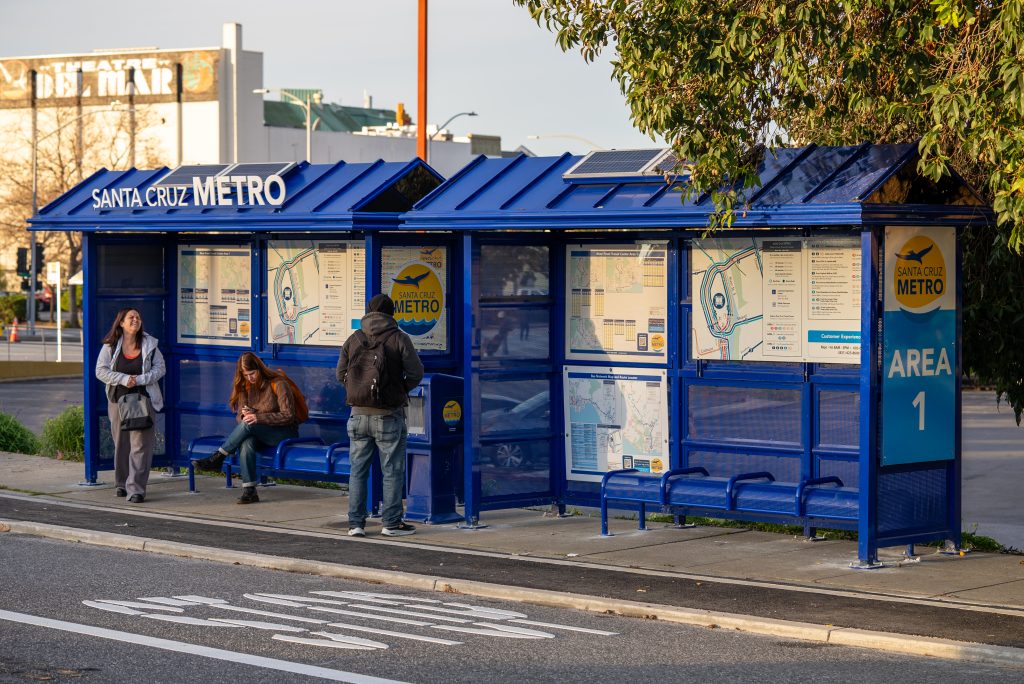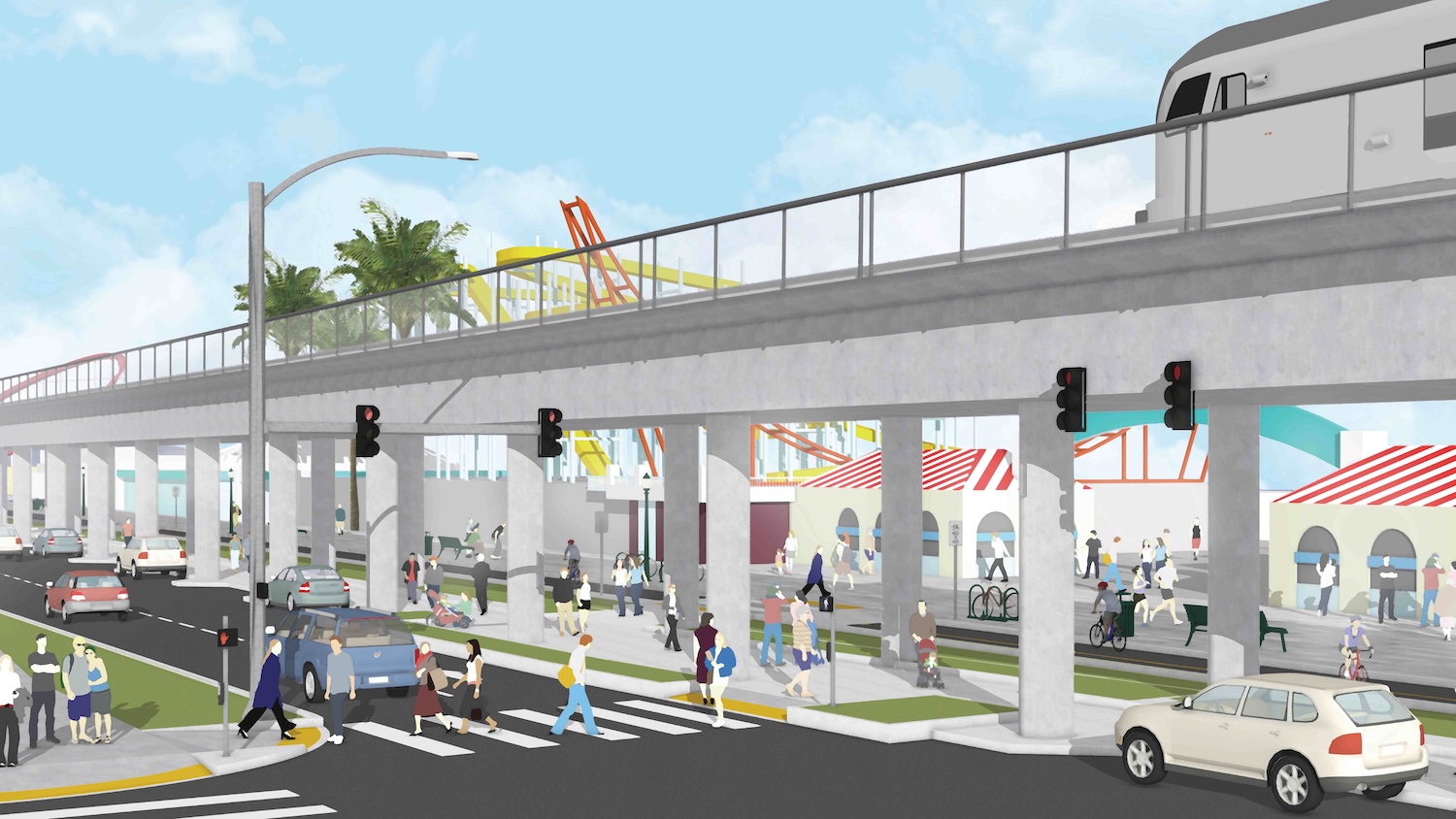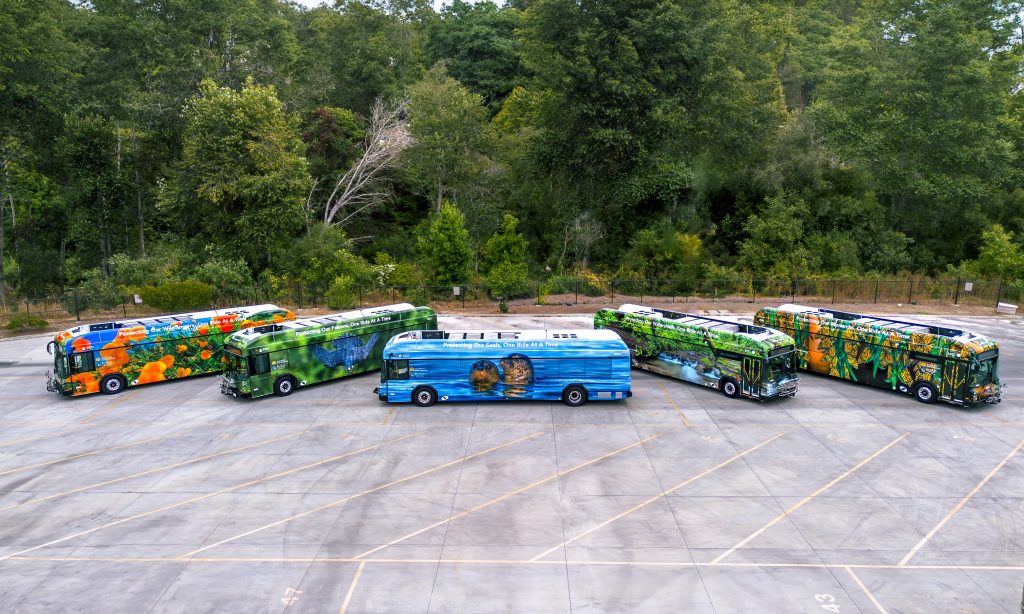
Plans & Projects
Trip planner
Plan your trip here
Directions
Nearby Transit Routes
Loading...
FY26 Winter Service Change, Route 4
Alert InformationRoute 4 Winter Service (eff. 12/18/25): Weekdays/Weekends: Weekdays: A new stop has been added at River & Encinal Ave. River/Front Garage Stop will no longer be served. Trip departure and arrival times have been adjusted along the route.
- Start: December 4, 2025, 4:00 PM
- End: January 1, 2026, 7:59 AM
Route(s): All
2026 New Year's Day
Alert InformationHoliday Service Reminder: New Year's Day (Thursday, January 1, 2026): No local METRO or ParaCruz service. Highway 17 Express will run on a weekend schedule. Customer Service will be closed.
- Start: December 28, 2025, 8:00 AM
- End: January 2, 2026, 7:59 AM
FY26 Winter Service Change, Route 3A/B
Alert InformationRoute 3A/B Winter Service (eff. 12/18/25): Weekdays/Weekends: Front & Laurel Stop will be re-activated for service. River/Front Garage Stop will no longer be served. Trip departure and arrival times have been adjusted along the route.
- Start: December 4, 2025, 4:00 PM
- End: January 1, 2026, 7:59 AM
Route(s): 1
FY26 Winter Service Change, Route 1
Alert InformationRoute 1 Winter Service (eff. 12/18/25): Weekdays/Weekends: A new stop has been added at E. Beach & Union. Freedom Blvd (K-Mart/Vallarta Supermarkets) has been renamed Freedom Blvd & Davis Ave. Trip departure and arrival times have been adjusted along the route.
- Start: December 4, 2025, 4:00 PM
- End: January 1, 2026, 7:59 AM
FY26 Winter Service Change, Route 35/35X/35B
Alert InformationRoute 35/35X/35B Winter Service (eff. 12/18/25): Route 35 (Highway9/Scotts Valley): Weekdays: The first trip in the morning from Country Club will depart five minutes earlier at 5:10am to enable a connection at Scotts Valley Transit Center to the Highway 17 Express departing to San Jose at 5:49am. Weekdays/Weekends: At River Front Transit Center, trips will now depart at Area 2, Soquel Ave & Front. River/Front Garage Stop will no longer be served. Route 35X (Santa Cruz/Boulder Creek Express) Weekdays: Trip departure and arrival times have been adjusted along the route. At River Front Transit Center, trips will now depart at Area 2, Soquel Ave & Front . River/Front Garage Stop will no longer be served. Route 35B (Scotts Valley – Big Basin) Weekends: Service to Big Basin Redwoods State Park does not operate during the Winter. It will resume in Spring 2026.
- Start: December 4, 2025, 4:00 PM
- End: January 1, 2026, 7:59 AM
FY26 Winter Service Change, Route 2/2N
Alert InformationRoute 2/2N Winter Service (eff. 12/18/25): Weekdays/Weekends: River/Front Garage Stop will no longer be served. Trip departure and arrival times have been adjusted along the route.
- Start: December 4, 2025, 4:00 PM
- End: January 1, 2026, 7:59 AM
Route(s): 16, 18, 18B, 19, 19B, 20
FY26 Winter Service Change, Route 16/18/19/20
Alert InformationRoute 16/18/19/20 Winter Service (eff. 12/18/25): Weekdays: Trip departure and arrival times have been adjusted along the route.
- Start: December 4, 2025, 4:00 PM
- End: January 1, 2026, 7:59 AM
Route(s): 79
FY26 Winter Service Change, Route 79
Alert InformationRoute 79 Winter Service (eff. 12/18/25): Weekdays/Weekends: Three new stops have been added: E. Beach & Union, E. Lake Ave & Tuttle Ave, and E. Lake Ave & Brewington Ave.
- Start: December 4, 2025, 4:00 PM
- End: January 1, 2026, 7:59 AM
Route(s): 34
FY26 Winter Service Change, Route 34
Alert InformationRoute 34 Winter Service (eff. 12/18/25): Weekdays: Trips from River Front will depart at :40 after the hour from 6:40am – 3:40pm; the last trip now departs at 5:00pm for Emeline workers ending work at 5:00. From Scotts Valley Transit Center, all trips will depart five minutes earlier at :40 from 6:40am – 5:40pm, which includes a new early morning trip at 6:40am to enable early morning connections at River Front Transit Center. The 8:00am trip to Vine Hill Elementary and Scotts Valley High School will depart five minutes earlier at 7:55am. At River Front Transit Center, trips will now depart at Area 2, Soquel Ave & Front. River/Front Garage Stop will no longer be served. Trip departure and arrival times have been adjusted along the route.
- Start: December 4, 2025, 4:00 PM
- End: January 1, 2026, 7:59 AM
Route(s): 11
FY26 Winter Service Change, Route 11
Alert InformationRoute 11 Winter Service (eff. 12/18/25): Weekdays/Weekends: River/Front Garage Stop will no longer be served. Trip departure and arrival times have been adjusted along the route.
- Start: December 4, 2025, 4:00 PM
- End: January 1, 2026, 7:59 AM
Route(s): 55
FY26 Winter Service Change, Route 55
Alert InformationRoute 55 Winter Service (eff. 12/18/25): Weekdays: Trip departure and arrival times have been adjusted along the route.
- Start: December 4, 2025, 4:00 PM
- End: January 1, 2026, 7:59 AM
Route(s): All
2025 Christmas Eve/Day
Alert InformationHoliday Service Reminder: Christmas Eve (Wednesday, December 24, 2025): Last departures are at 8pm, except Highway 17 Express. Christmas Day (Thursday, December 25, 2025): No local METRO or ParaCruz service. Highway 17 Express will run on a weekend schedule. Customer Service will be closed.
- Start: December 22, 2025, 4:00 PM
- End: December 26, 2025, 7:59 AM
Route(s): 17
FY26 Winter Service Change, Route 17
Alert InformationRoute 17 Winter Service (eff. 12/18/25): Weekdays: Many trip departure and/or arrival times have been adjusted by five to ten minutes – earlier or later - along the route to improve schedule accuracy and connections to Caltrain.
- Start: December 4, 2025, 4:00 PM
- End: January 1, 2026, 7:59 AM
Route(s): 3A
Murray St IB(West) Closure, March 2025
Alert InformationDue to the Murray Street Bridge Seismic Retrofit Project, Route 3A Inbound (Capitola Mall to Downtown) will operate on a detour starting March 24, 2025, until further notice. The 3A will continue on 7th Ave to Capitola Road, to Soquel Dr, to Seabright Ave, to Broadway returning to normal routing. Please be prepared for additional detours as the project progresses. Visit https://rt.scmetro.org for METRO Real-Time tracking.
- Start: March 12, 2025, 4:15 PM
Route(s): 72
FY26 Winter Service Change, Route 72
Alert InformationRoute 72 Winter Service (eff. 12/18/25): Weekdays: Trip departure and arrival times have been adjusted along the route.
- Start: December 4, 2025, 4:00 PM
- End: January 1, 2026, 7:59 AM
Route(s): 73
FY26 Winter Service Change, Route 73
Alert InformationRoute 73 Winter Service (eff. 12/18/25): Weekdays: Certain trips will depart Capitola Mall and Watsonville Transit Center up to ten minutes earlier or five minutes later and departure and arrival times have changed along the route. Weekdays/Weekends: Freedom Blvd (K-Mart/Vallarta Supermarkets Stop) has been renamed Freedom Blvd & Davis Ave.
- Start: December 4, 2025, 4:00 PM
- End: January 1, 2026, 7:59 AM
Service Alerts
Current Projects

Reimagine METRO
Reimagine METRO ushered in a new wave of bus service improvements, increasing service in Santa Cruz County by over 50 percent.

Rapid Corridors
METRO is making transit between Watsonville and Santa Cruz faster, more reliable, and more accessible.

Affordable Housing
We are redeveloping our Santa Cruz and Watsonville transit centers with the goal of providing 175 new affordable housing units by 2033.

One Ride at a Time
One Ride at a Time is a campaign that gives everyone in Santa Cruz County an opportunity to protect our extraordinary natural resources by simply riding the bus.

Zero-Emmissions Plan
We have an aggressive strategy to convert the entire METRO bus fleet to zero-emissions vehicles by 2037, three years ahead of the California deadline.

Youth Cruz Free
With Youth Cruz Free, K-12 students can ride free on any fixed-route METRO bus in Santa Cruz County.
Projects Archive
METRO Studies & Reports
Santa Cruz County Regional Transportation Commission Studies & Report
Highway 9 San Lorenzo Valley Corridor Transportation Plan
Cruz511 “In your Neighborhood”
Other METRO Documents